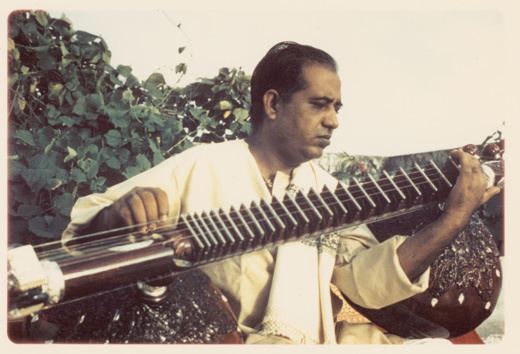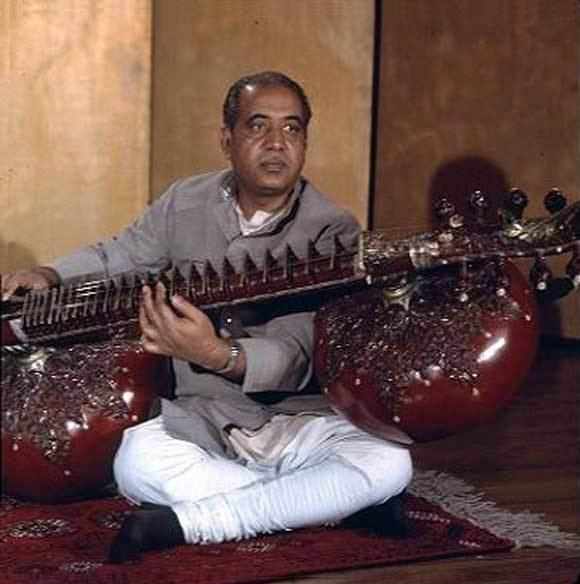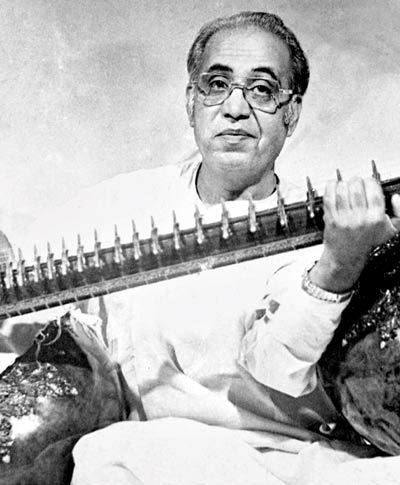Died September 28, 1990 Children Bahauddin Dagar | Name Zia Dagar Siblings Zia Fariduddin Dagar Role Musician | |
 | ||
Albums Live in Stockholm 1969, Rudra Veena Recital, Raga Mangeyabushan, Raga Shudda Todi, Raga Yaman Similar People Zia Fariduddin Dagar, Bahauddin Dagar, Aminuddin Dagar, Asad Ali Khan, Wasifuddin Dagar | ||
Associated acts Zia Fariddudin Dagar | ||
Zia mohiuddin dagar dhrupad raga yaman
Zia Mohiuddin Dagar (14 March 1929 – 28 September 1990), popularly known as Z. M. Dagar, was a North Indian (Hindustani) classical musician, one of the 19th generation of Dagar family dhrupad musicians. He was largely responsible for the revival of the rudra vina as a solo concert instrument.
Contents
- Zia mohiuddin dagar dhrupad raga yaman
- Zia mohiuddin dagar 1 dhrupad raga yaman live in france
- Early life and choice of veena
- Struggles and hardships
- Playing style
- Outside India
- Honours
- Family
- Establishment of the Dhrupad Gurukul
- Death
- Video
- References

Zia mohiuddin dagar 1 dhrupad raga yaman live in france
Early life and choice of veena

Z. M. Dagar was born in the town of Udaipur, Rajasthan and began musical study with his father, Ustad Ziauddin Khan Dagar, court musician for the Maharana of Udaipur. He was trained both in vocals and in the rudra veena, an instrument used by vocalists to practice melodies. The veena was traditionally not played in public, but the young Zia Mohiuddin adopted it as his primary instrument, giving his first recital at age 16. Although he was discouraged by his father from experimenting with the structure of the veena, he nevertheless modified the instrument after his father's death to better equip it for solo performance, transforming it into a larger bass instrument (sometimes called a 'Dagar veena'): With the help of the instrument house Kanailal & Brother, he enlarged the tumbas (gourds) and dhandhi (hollow neck) to create greater resonance and to allow the notes to sustain longer and so better reproduce the techniques used in dhrupad singing. Because of these modifications, the instrument was too heavy to be held in the standard Northern posture (with one tumba on the left shoulder), so he played instead in the Southern posture, with one tumba on the ground and one on the left knee.
Struggles and hardships

After India gained independence the princely states were abolished. The Dagar family lost the patronage of the court of Udaipur, and had to seek employment elsewhere. Finally they arrived in Mumbai. For 25 years they had to make ends meet by working in garages, selling bread, and rarely, playing instruments for movie scores. They did not have a tanpura, sitar, or veena, let alone a house. There was much cynicism about dhrupad, as his son Mohi Baha'ud-din recounted in an interview.

"Dhrupad? Who'll listen? Rudra veena? Play something else. Long alaaps? So boring!"
Playing style
Z. M. Dagar was known particularly for his slow development of ragas, typically performed only with tanpura accompaniment (he rarely played with pakhawaj), and for his meticulous attention to microtonal inflections.
Outside India
He was very active in the West, associating himself with the American Society for Eastern Arts in Berkeley, California and with Wesleyan University, Rotterdam Music Conservatory, and the University of Washington, Seattle, where he was a visiting professor.
Honours
In 1990, Ustadji was awarded the Kalidas Samman, one of India's most prestigious awards, by the Madhya Pradesh government. He also received the Sangeet Natak Academi Award, the Rajasthan Sangeet Natak Academi award, and the Maharana Kumbha award, to name a few.
Family
His younger brother, Ustad Zia Fariddudin Dagar, is a vocalist and teacher, and his son, Mohi Baha'ud-din, is a veena player.
Establishment of the Dhrupad Gurukul
Established in 1982 The concept of making a Gurukul was entirely Ustad Zia Mohiuddin Dagar's. He envisioned a place where he would sit with his disciple and impart training in the 'Guru Shishya Parampara ' a method in which a few selected students study under one roof whilst staying with the guru. Ustad sahib put at least twenty years of his time and effort to give shape to this idea on his own and thus, the Gurukul came into being in 1982 at Palaspa - a village near Panvel - Mumbai.
Death
Ustad Zia Mohiuddin Dagar died in 1990.
